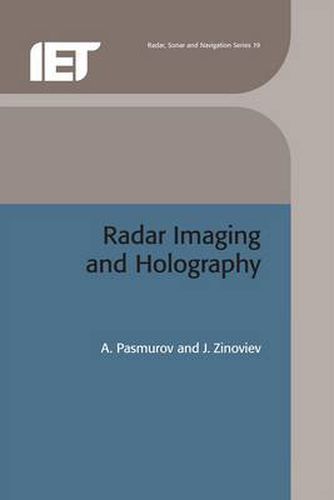Readings Newsletter
Become a Readings Member to make your shopping experience even easier.
Sign in or sign up for free!
You’re not far away from qualifying for FREE standard shipping within Australia
You’ve qualified for FREE standard shipping within Australia
The cart is loading…






Increasing information content is an important scientific problem in modern observation systems development. Radar, or microwave, imaging, a technique which combines radar techniques with digital or optical information processing, can be used for this purpose. Drawing on their own research, the authors provide an overview of the field and explain why a unified approach based on wave field processing techniques, including holographic and tomographic approaches, is necessary in high resolution radar design. Such techniques use the complex field incident on an observation surface to produce a hologram, which can be used to reconstruct an image of the object or to restore some of its physical parameters. This makes it possible to extract the size, coordinates and radar cross-section of individual scattering centres.
The book focuses on holography and tomography for quasimonochromatic and broadband signals, and gives detailed coverage of the basic physical methods, inverse problems and mathematical principles. It also contains discussion of new areas in imaging radar theory, holographic radar, the questions of estimation and improving radar image quality, and finally various practical applications in the fields of space, airborne radar, air traffic control, medical dia nostics and remote sensing.
$9.00 standard shipping within Australia
FREE standard shipping within Australia for orders over $100.00
Express & International shipping calculated at checkout
Increasing information content is an important scientific problem in modern observation systems development. Radar, or microwave, imaging, a technique which combines radar techniques with digital or optical information processing, can be used for this purpose. Drawing on their own research, the authors provide an overview of the field and explain why a unified approach based on wave field processing techniques, including holographic and tomographic approaches, is necessary in high resolution radar design. Such techniques use the complex field incident on an observation surface to produce a hologram, which can be used to reconstruct an image of the object or to restore some of its physical parameters. This makes it possible to extract the size, coordinates and radar cross-section of individual scattering centres.
The book focuses on holography and tomography for quasimonochromatic and broadband signals, and gives detailed coverage of the basic physical methods, inverse problems and mathematical principles. It also contains discussion of new areas in imaging radar theory, holographic radar, the questions of estimation and improving radar image quality, and finally various practical applications in the fields of space, airborne radar, air traffic control, medical dia nostics and remote sensing.